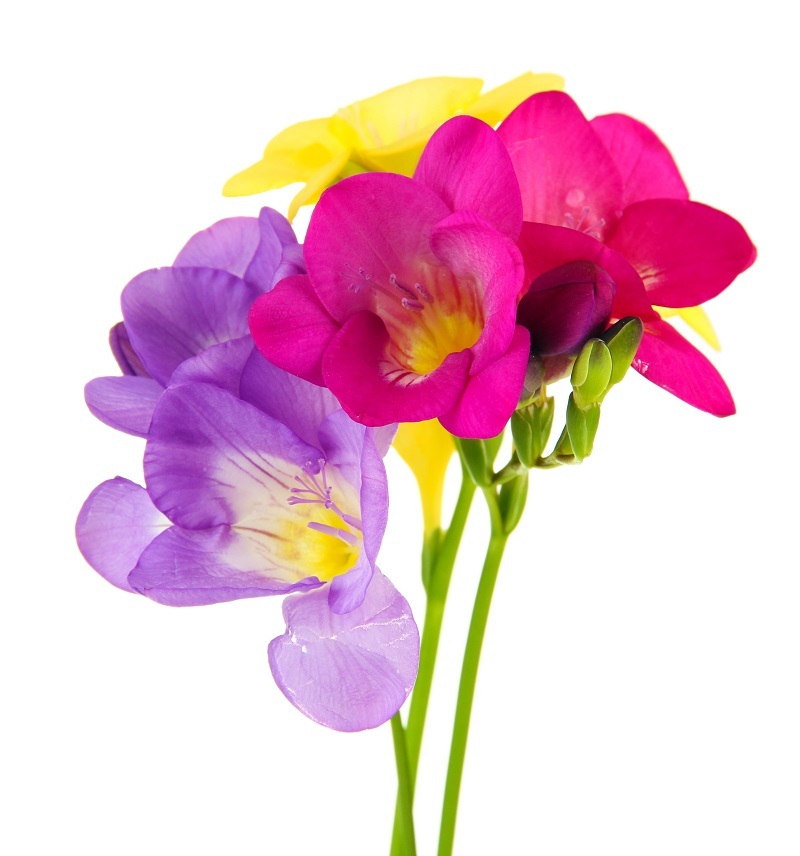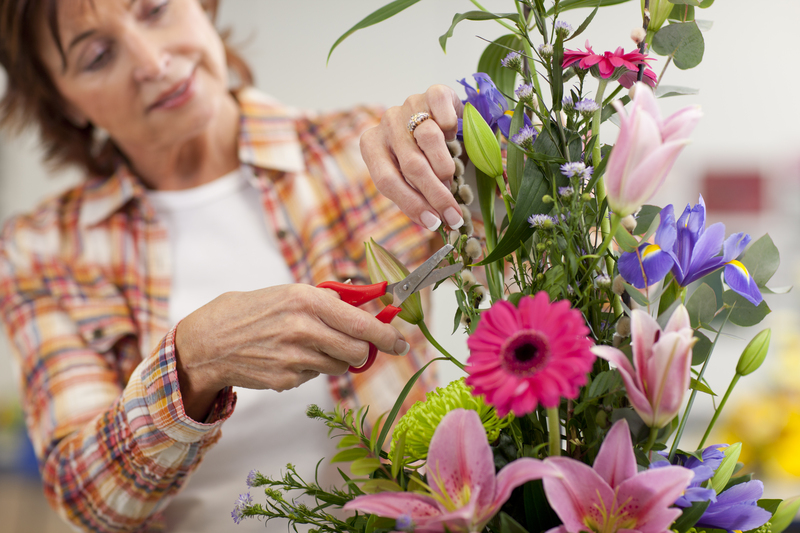How to Successfully Maintain Your Fresh Cut Flowers
Posted on 03/09/2025
How to Successfully Maintain Your Fresh Cut Flowers
Fresh cut flowers bring natural beauty, color, and a delightful fragrance into your home. However, keeping them vibrant and healthy for as long as possible requires specific care and attention. Whether you have received a stunning bouquet as a gift or selected your favorite blooms from a local florist, understanding how to successfully maintain your fresh cut flowers can greatly extend their lifespan and keep your living space cheerful.
Why Proper Flower Maintenance Matters
Flowers are delicate living things, and once they're cut, they're separated from their primary source of water and nutrients. Proper care techniques can help prolong their beauty and prevent premature wilting. By learning how to maintain fresh cut flowers correctly, you can enjoy their exquisite presence for days--or even weeks--beyond their natural lifespan.
- Extended enjoyment of your floral arrangement
- Improved presentation and fragrance in your home
- Reduced wastage and better value for money

Essential Steps for Maintaining Fresh Cut Flowers
1. Choose Quality Flowers from the Start
Maintenance is easier with healthy, fresh flowers. When selecting flowers--whether from a store, market, or your own garden--look for:
- Buds just starting to open for longer enjoyment
- Sturdy, green stems without signs of decay or mushiness
- Healthy foliage--avoid leaves with yellowing, spots, or wilting
Tip: Purchase flowers in the morning, when they are freshest and have not yet been exposed to a full day of heat or sun.
2. Clean Your Vase Thoroughly
A clean vase is crucial for maintaining fresh cut flowers. Residual bacteria from previous arrangements can drastically shorten their lifespan. Follow these steps:
- Wash your vase with hot water and soap
- Rinse well to remove any cleaner residue
- Optional: Disinfect with a weak bleach solution (1 tsp bleach per quart of water), then rinse thoroughly.
3. Trim Stems Properly
Trimming stems allows flowers to draw water more efficiently. Here's how to do it:
- Use sharp, clean scissors or florist shears--never dull blades, as they can crush stems.
- Cut 1-2 inches off the bottom at a 45-degree angle. This increases the surface area for water uptake and prevents the stem from sitting flat at the bottom of the vase, which can block absorption.
- Trim stems under water if possible, to prevent air from entering the stems (which can create blockages).
Pro Tip: Re-trim the stems every 2-3 days to keep the vascular tissue open and absorbent.
4. Remove Lower Leaves and Foliage
Leaves that rest below the water line can rot quickly and produce bacteria, shortening the life of your flowers. To prevent this:
- Remove all leaves or foliage that would be submerged
- Check the bouquet daily for any decaying leaves or petals--remove them promptly
5. Add the Right Flower Food
Most bouquets come with a small packet of flower food (preservative). This mixture typically contains:
- Sugar--feeds the flowers
- Acidifier--lowers pH to increase water uptake
- Biocide--prevents growth of bacteria and fungi
If you run out or do not have flower food, you can make a simple DIY flower preservative:
- 1 teaspoon sugar
- 2 teaspoons lemon juice or vinegar
- A few drops of household bleach
- Mix into 1 quart of lukewarm water
Note: Avoid adding aspirin or copper coins, as these are not as effective as dedicated flower food formulations.
6. Water Selection and Maintenance
Fresh cut flowers thrive in clean, fresh water. Some guidelines to follow:
- Fill your vase about two-thirds full with room temperature water
- Change the water every 2 days--this prevents bacterial buildup
- Clean the vase each time you change the water, wiping away any slime on the sides or bottom
- Top up the water level as needed, especially in warm environments
The Ideal Environment for Your Cut Flowers
1. Correct Placement
To maintain fresh flower bouquets as long as possible, keep your arrangement in the right place:
- Avoid direct sunlight--bright, indirect light is ideal
- Keep away from heat sources such as radiators, vents, or appliances
- Do not place them next to fresh fruit, as ripening produce releases ethylene gas, which can accelerate flower wilting
- Draft-free areas are best, as strong air movement can dehydrate petals and leaves
2. Humidity and Temperature
Fresh cut flowers last longer in cool and humid conditions:
- Night temperatures of 50-60?F (10-15?C) slow down aging
- Consider moving your arrangement to a cooler spot overnight
- Misting the blooms lightly (unless advised against it for particular flowers) can maintain turgidity
Advanced Tips: Prolonging the Life of Specific Flower Types
Different flowers have unique characteristics and needs. Here's how to optimize care for some popular varieties:
Roses
- Remove guard petals (the outermost, often damaged petals) gently to help the bloom open
- Check the stems daily for signs of blockage--trim as needed
- Remove any wilted or drooping heads promptly
Tulips
- Display in tall, straight vases; tulips continue to grow after being cut
- Use cold water for best results
- Trim stems slightly each day to keep them from drooping
Hydrangeas
- Dip the cut end in boiling water for 30 seconds to improve water uptake
- Mist the flower heads regularly--they absorb water through petals as well as stems
Lilies
- Remove the pollen-containing stamens with a tissue as soon as the flower opens (prevents staining and extends bloom life)
- Leave some buds closed for continuous blooming over several days
Daisies and Mums
- Change water regularly due to their tendency to shed petals
- Remove dying flower heads to prevent decay from spreading
Common Mistakes to Avoid
Even with the best intentions, it's easy to make small missteps that can shorten the life of your cut flowers. Here are some pitfalls to watch out for:
- Neglecting to change the water or clean the vase
- Failing to trim stems regularly
- Leaving wilting foliage in the arrangement
- Placing arrangements in hot or sunny locations
- Using unfiltered tap water in areas with heavily chlorinated or hard water--filtered or distilled water may be better in these cases
Frequently Asked Questions about Maintaining Fresh Flowers
How long should fresh cut flowers last?
With proper care for fresh cut flowers, most arrangements last 7-10 days, though some robust varieties (like carnations, chrysanthemums, and alstroemeria) can last up to 2 weeks or more.
Should I refrigerate my flowers?
Professional florists store flowers in refrigerated rooms to slow aging. At home, you can move your flowers to a cool, non-freezing room at night. Avoid putting them in a standard refrigerator unless it's free of fruits and vegetables, as these give off ethylene gas.
Can I revive wilted flowers?
Sometimes, yes! Re-trim the stems and let the flowers soak in fresh, lukewarm water. Some flowers, like roses, benefit from being submerged completely (stem and head) in cool water for 30-60 minutes.
What's the best water temperature for cut flowers?
Room temperature water is best for most flowers, but some (like tulips and daffodils) prefer colder water, while others (like woody-stemmed flowers) hydrate best in warm water initially.

Creative Ways to Prolong the Beauty of Your Flowers
Beyond the basics, there are a number of additional methods to keep bouquets fresh and lively:
- Display smaller arrangements in several vases--crowding can damage petals and prevent air circulation
- Snip spent blooms to encourage the remaining flowers to open
- Try sealing cut stems with a match or lighter (for certain milk-producing stems like poppies) to reduce sap loss
- Make a habit of spritzing flowers lightly with water during dry or hot days
Conclusion: Enjoy Your Fresh Cut Flowers Longer
By following these tips for maintaining fresh cut flowers, you can maximize the beauty and vitality of your floral arrangements. The key principles are simple: start with healthy flowers, use clean water and vases, trim and remove excess foliage, feed them properly, and display in the right conditions. With a little extra attention and care, your bouquets will remain vibrant, cheerful, and fragrant, brightening your home for many days to come.
Now you know how to successfully maintain your fresh cut flowers--enjoy every blossom to the fullest!
Latest Posts
Eco-Friendly Flower Delivery Options in [AREA]
How to Successfully Maintain Your Fresh Cut Flowers
Cherish Your Poinsettias Longer with Simple Steps






